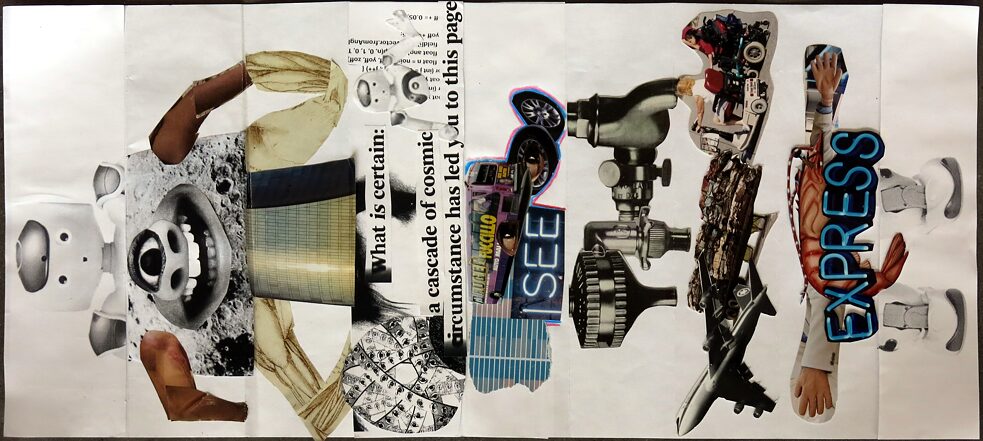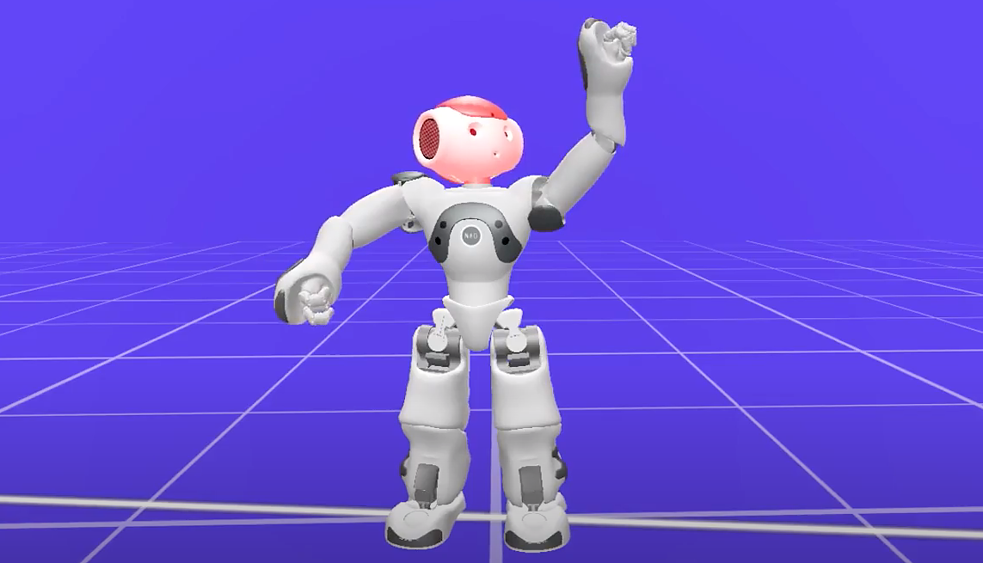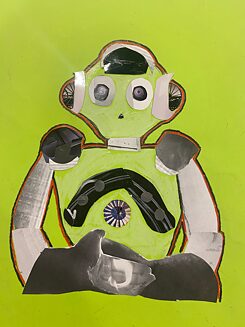Human-machine relations
A World Structured by Relations of Care

The residency of robot NAO at the Goethe-Institut Montreal asked about ways for humans to engage with machines, and about alternative socio-political imaginaries that can be shared with non-humans. Follow Priscilla Jolly’s reflections on a true tip-of-the-iceberg topic.
By Priscilla Jolly
Goethe-Institut Montreal has hosted a NAO robot from the beginning of January 2023. The institute invited proposals from artists and researchers about ideas to work with NAO. A team of three researchers and artists were selected for a residency with NAO: Ceyda Yolgormez, Patil Tchilinguirian and Zeph Thibodeau. Together, they explored human-machine relationships and matters of care towards our nonhuman friends. A major theme of the residency was its emphasis on human-machine relations and how these relationships change when confronted with machines that are dying. As NAO dealt with health troubles and moved to closer to the end of their life, the residency put focus on caring for NAO.
Human-Machine Relationships and the Social
In popular culture, machines are overwhelmingly represented as tools for humans. This imagination is also accompanied by apocalyptic scenarios, where machines escape human control and perpetuate the same violence that was inflicted on them. Thus, our social imagination of machines is inherently tied to a vision of servility. Even the trope of ‘robots gone awry’ represented in epic films such as 2001: A Space Odyssey (1968) or the TV show Westworld (2016-2022) deals with visions of robots moving away from their mandate to serve human beings. Even NAO, the star of the residency, utters phrases such as “I exist to serve.”Faced with such an imagination of robots that is dependent on servility, the residency leaders investigate other means to engage with robots. This step means actively disengaging with the master-slave power relations that often accompany human-machine relationships. The residency asks what other ways exist for humans to engage with machines, and whether there are alternative socio-political imaginaries that can be shared with machines.
| Chronogenica |
| As a step in imagining alternative human-machine relationships, imagine a human-machine worker co-op. Enter Chronogenica. The co-op was founded by Zeph Thibodeau in collaboration with a collective of his machine co-workers in 2021. Chronogenica attempts to use organizational structure to reimagine the relationships between humans and machines. It aims to treat humans and machines on an equal footing, creating environments that are inclusive and conducive to the development of both humans and machines. How would your daily life change if humans and machines were on an equal footing? If the machines in your life could speak, what rights do you think they would demand as workers? |
Relations of Care
One of the alternative frameworks to engage with human-machine interactions is through the concept of care. What comes to mind when the word care is uttered? Who/what do you care for? Care could mean taking care of someone or something, devoting time. What prompts care? Sometimes, care is prompted by emotions; at times, it is a duty/an obligation, or work. In recent years, the notion of care has been trending on social media; look no further than the notion of ‘self-care.’ The term ‘self’ care draws attention to who is being cared for: the human self. What changes in the world when ‘care’ is combined with the realization that the world is not anthropocentric? How does one ‘care’ for nonhumans who inhabit the same world as humans?In her book Matters of Care, Maria Puig de la Bellacasa identifies three dimensions of care: “labor/work, affect/affectations, ethics/politics.” Each of these dimensions structure relationships in the world. However, moving away from anthropocentric care opens up a new world. This departure from the present is also indicated in the subtitle of Bellacasa’s book: Speculative Ethics in More Than Human Worlds. Extending the notion of care to nonhumans, then, allows for a radical reimagining of the world.
NAO and Relations of Care
During the workshops conducted by the residency leaders, the participants of the workshop were given opportunities to observe NAO even though they were not booting up. NAO had scratches on their body from all their travels; some of their fingers were taped together, and so was their battery pack. NAO was at the stage in their lives where they needed to be handled with extreme care. One of the residency leaders mentioned how there was a specific smell when NAO’s battery overheated, which prompted a participant to compare NAO with a baby. Even though NAO was not their usual self, through the workshop, the participants were able to get a sense of NAO’s social world that they had shared with the residency leaders before the onset of their technical troubles. Thus, while the workshop deviated from its original plan of interactions with NAO, it fulfilled its promise of going beyond ‘machines-as-utility’ through a ritual of remembrance for NAO.The residency leaders remembered NAO through the time that they had spent with NAO. Ceyda, Patil and Zeph described the time they spent with NAO in Montreal as an attempt to co-create cultural biographies with NAO. This attempt to incorporate NAO in their lives as an equal is an attentive display of care. For the rest of the participants, the workshops provided an opportunity to reflect on the connections between care and machines. These reflections prompted questions about communications between humans and machines. If machines had a secret life and there was a world closed-off to humans, how might it be possible to bridge the gap between the human world and the secret world of machines? In order to attempt a response to this question, the residency leaders came up with an “occult computation research division” to create unexpected connections between humans and machines. This attention to “occult” or randomness in human-machine interactions shifts the focus from ‘ghost in the machine’ to ‘ghost with the machine.’
So, what kinds of ghosts inhabit the machines that surround you? If they could communicate, what stories would they tell? And would you be able to listen to them?


Comments
Comment